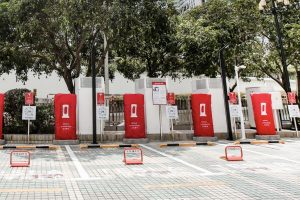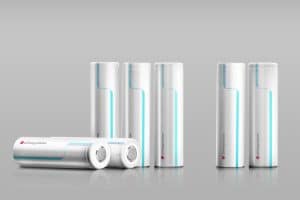- 🌲 Tesla’s tree removal at Giga Berlin was necessary for building the factory.
- 📰 The media coverage about Tesla’s deforestation has been misleading.
- 🌳 Tesla has replanted the trees threefold, improving their environmental impact.
- 📉 The removed trees were of lower quality, primarily used for cardboard.
- 🌍 Tesla actively contributes to the transition to a sustainable energy future.
Tesla’s Gigafactory in Berlin has been a focal point of debate, primarily due to its initial tree-clearing activities, which have sparked misleading media portrayals. As the world shifts towards a sustainable future, Tesla’s actions and the subsequent reactions offer a unique lens into the complexities of environmental conservation and industrial growth. This post aims to dissect these movements and provide a nuanced perspective on Tesla’s environmental strategy at Giga Berlin.
The Necessary Beginnings: Clearing the Canvas
Before delving into the controversies, it’s crucial to understand the necessity behind the tree removal at Giga Berlin. To lay the groundwork for one of Europe’s most advanced electric vehicle factories, Tesla needed to clear low-grade trees. These trees, primarily used for cardboard, were deemed less beneficial to the ecosystem than those Tesla has committed to introducing—a testament to the complexities of balancing industrial needs with environmental priorities.
Clearing Misconceptions: Media Coverage
The dynamic story of Giga Berlin has often been eclipsed by media narratives that emphasize deforestation. This misleading coverage may not adequately represent the reality and the green commitments Tesla stands by. While tree removal is a tangible environmental impact, the story broadens considerably when you consider the larger context of Tesla’s replanting and sustainability efforts. It is essential for media outlets to present a factual balance of both the immediate environmental footprint and the long-term ecological goals.
A Calculated Commitment: The Replanting Promise
Tesla has taken significant steps to address environmental concerns post tree removal. The company has promised to replant trees threefold, instating more environmentally impactful species in more suitable locations. This effort demonstrates a level of accountability and responsibility, turning initial environmental disruption into an opportunity for ecological betterment.
Benefits of Replanting:
- Enhanced Biodiversity: By choosing species that support a wider variety of wildlife, Tesla contributes to a more robust ecosystem.
- Improved Air Quality: The reestablished forests are poised to have a greater capacity for carbon absorption and oxygen production.
- Community Engagement: These efforts also promote Tesla’s image as a socially responsible entity, potentially inspiring other corporations to follow suit.
Tesla’s Broader Role in Sustainable Energy
Beyond Giga Berlin, Tesla is at the forefront of the transition towards sustainable energy. The factory itself will play a crucial role in producing electric vehicles that are vital to reducing overall carbon emissions. Tesla’s multifaceted approach—from cutting-edge EV technology to renewable energy solutions—cements its role as a leader in the sustainable energy sector.
Conclusion: Looking Ahead
Tesla’s endeavors at Giga Berlin highlight the intricate relationship between industrial development and environmental stewardship. Through proactive replanting strategies and commitment to sustainable practices, Tesla not only compensates for the initial ecological impact but potentially enhances the environment in ways that south of traditional metrics of success. While public scrutiny is inevitable, it’s through continued transparency and innovation that Tesla can shape a clearer path for a sustainable future.





